 W
WThe prehistory of Papua New Guinea can be traced to about 60,000 years ago, when people first migrated towards the Australian continent. The written history began when European navigators first sighted New Guinea in the early part of the 17th century.
 W
WThe 8th Military District was an administrative district of the Australian Army. During the Second World War, the 8th Military District covered the Territory of New Guinea, the Solomon Islands and the New Hebrides, with its headquarters firstly at Rabaul and later at Port Moresby.
 W
WANGAU Hospital is a major hospital in Lae, Papua New Guinea. Named after an Australian Army unit that was responsible for the civil administration of the Territory of Papua and the Mandated Territory of New Guinea, the hospital provides in-patient and specialist medical services to people in the Sepik, Madang and Morobe provinces. In 2013–14, the Australian government announced that it would contribute to the hospital's redevelopment as part of a deal with the PNG government relating to the resettlement of asylum seekers.
 W
WThe Australian New Guinea Administrative Unit (ANGAU) was a civil administration of Territory of Papua and the Mandated Territory of New Guinea formed on 21 March 1942 during World War II. The civil administration of both Papua and the Mandated Territory of New Guinea were replaced by an Australian Army military government and came under the control of ANGAU from February 1942 until the end of World War II.
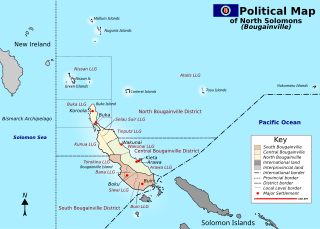 W
WThe Bougainville conflict, also known as the Bougainville Civil War, was a multi-layered armed conflict fought from 1988 to 1998 in the North Solomons Province of Papua New Guinea (PNG) between PNG and the secessionist forces of the Bougainville Revolutionary Army (BRA), and between the BRA and other armed groups on Bougainville. The conflict was described by Bougainvillean President John Momis as the largest conflict in Oceania since the end of World War II in 1945, with an estimated 15,000–20,000 Bougainvilleans dead, although lower estimates place the toll at around 1,000–2,000.
 W
WColonist was a general cargo and passenger schooner built in 1861 at Dumbarton Scotland by Denny & Rankine. It spent nearly 30 years plying the Western Pacific-based out of Sydney. It wrecked and later re-floated on the remote Elizabeth Reef 550 km from New South Wales, as well as being involved in the gold rushes. Its master was murdered before it was finally involved in a collision in Sydney Harbour, in which it was sunk.
 W
WOperation Copper was carried out by the Allied commando unit Z Special Unit, during World War II. The objective of the mission was to investigate the Japanese defences on Muschu Island, capture a Japanese officer for interrogation and discover the location of two naval guns on the island that covered the approaches to Wewak Harbour. Eight commandos were landed as part of the operation; only one survived.
 W
WThe Third de Rays Expedition, or simply the de Rays Expedition, was the third New Guinea expedition of Marquis de Rays, a French nobleman who attempted to start a colony in the South Pacific. The expedition attempted to establish a colony in a place the marquis called La Nouvelle France, or New France, which was the island now referred to as New Ireland in the Bismarck Archipelago of present-day Papua New Guinea. Three hundred and forty Italian colonists aboard the ship India set sail from Barcelona in 1880 for this new land, seeking relief from the poor conditions in Italy at that time. One hundred and twenty-three colonists died before being rescued by Australian authorities. The marquis is widely believed to have deliberately misled the colonists, distributing literature claiming a bustling settlement existed at Port Breton, near present-day Kavieng, which had numerous public buildings, wide roads, and rich, arable land.
 W
WJohann Flierl was a pioneer Lutheran missionary in New Guinea. He established mission schools and organised the construction of roads and communication between otherwise remote interior locations. Under his leadership, Lutheran evangelicalism flourished in New Guinea. He founded the Evangelical Lutheran Mission in the Sattelberg, and a string of filial stations on the northeastern coast of New Guinea including the Malahang Mission Station.
 W
WFuzzy Wuzzy Angels was the name given by Australian soldiers to Papua New Guinean war carriers who, during World War II, were recruited to bring supplies up to the front and carry injured Australian troops down the Kokoda trail during the Kokoda Campaign. "Fuzzy-Wuzzy" was originally used by British soldiers in the 19th century as a name for Hadendoa warriors on the Red Sea coast of the Sudan, and referred to their elaborate butter-matted hairstyles.
 W
WGerman New Guinea consisted of the northeastern part of the island of New Guinea and several nearby island groups and was the first part of the German colonial empire. The mainland part of the territory, called Kaiser-Wilhelmsland, became a German protectorate in 1884. Other island groups were added subsequently. New Pomerania, the Bismarck Archipelago, and the northern Solomon Islands were declared a German protectorate in 1885; the Caroline Islands, Palau, and the Mariana Islands were bought from Spain in 1899; the protectorate of the Marshall Islands was bought from Spain in 1885 for $4.5 million by the 1885 Hispano-German Protocol of Rome; and Nauru was annexed to the Marshall Islands protectorate in 1888.
 W
WThe German New Guinea Company was a German Chartered Company which exploited insular territory in and near present Papua New Guinea.
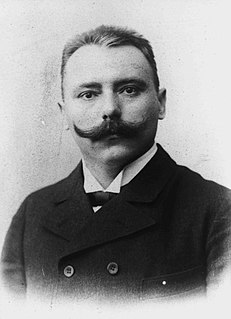 W
WDr. Albert Hahl was a German colonial administrator. In 1897, he was acting Landeshauptmann of the German New Guinea Company and from 1902 to December 1917, was Governor of German New Guinea. In 1903 he founded the town of Rabaul, which became the capital of the colony. Hahl is featured in Christian Kracht's 2012 novel Imperium, which focuses on August Engelhardt.
 W
WBougainville, an autonomous region of Papua New Guinea (PNG), has been inhabited by humans for at least 29,000 years, according to artefacts found in Kilu Cave on Buka Island. The region is named after Bougainville Island, the largest island of the Solomon Islands archipelago, but also contains a number of smaller islands.
 W
WAs the township of Lae, in Morobe Province, Papua New Guinea is a relatively new entity, the history of the Lae environs is much older.
 W
WKaiser-Wilhelmsland formed part of German New Guinea, the South Pacific protectorate of the German Empire. Named in honour of Wilhelm I, who reigned as German Emperor (Kaiser) from 1871 to 1888, it included the northern part of present-day Papua New Guinea. From 1884 until 1920 the territory was a protectorate of the German Empire. Kaiser-Wilhelmsland, the Bismarck Archipelago, the northern Solomon Islands, the Caroline Islands, Palau, Nauru, the Mariana Islands, and the Marshall Islands comprised German New Guinea.
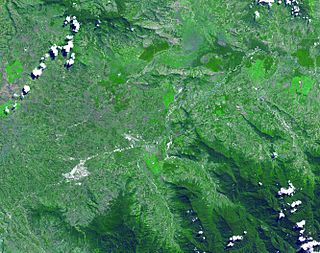 W
WKuk Swamp is an archaeological site in New Guinea, that lies in the Wahgi Valley of the highlands. The swamp developed in a former lake basin, as it was filled by an alluvial fan or deposits of water-transported material. Archaeological evidence for early agricultural drainage systems was found here, beginning about 9,000 years ago. It includes draining ditches of three major classes, which were used to convert the area to an anthropogenic grassland. The native crop taro was grown here.
 W
WLae Airfield is a former World War II airfield and later, civilian airport located at Lae, Morobe Province, Papua New Guinea. The airport was closed in the 1980s, in favour of Lae Nadzab Airport, which was able to accommodate larger jet aircraft. The airport was known as Lae Drome or Lae Aerodrome
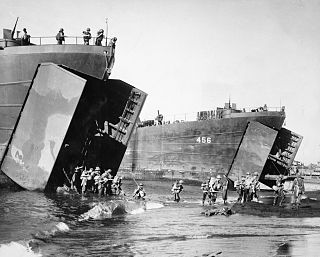 W
WThe Landing at Lae was an amphibious landing to the east of Lae and then the subsequent advance on the town during the Salamaua–Lae campaign of World War II. Part of Operation Postern, which was undertaken to capture the Japanese base at Lae, the landing was undertaken between 4 and 6 September 1943 by Australian troops from the 9th Division, supported by US naval forces from the VII Amphibious Force. The first major amphibious operation undertaken by the Australian Army since the failed Gallipoli Campaign, the Australians invested a significant amount of effort into planning the operation.
 W
WJacob Le Maire was a Dutch mariner who circumnavigated the earth in 1615 and 1616. The strait between Tierra del Fuego and Isla de los Estados was named the Le Maire Strait in his honor, though not without controversy. It was Le Maire himself who proposed to the council aboard Eendracht that the new passage should be called by his name and the council unanimously agreed with Le Maire. The author or authors of The Relation took Eendracht captain Schouten's side by proclaiming:“ ... our men had each of them three cups of wine in signe of ioy for our good hap ... [and the naming of] the Straights of Le Maire, although by good right it should rather have been called Willem Schouten Straight, after our Masters Name, by whose wise conduction and skill in sayling, the same was found.”.
 W
WThe Malahang Mission Station is a Lutheran filial station situated in Malahang, Morobe Province in Papua New Guinea now under the auspices of the Evangelical Lutheran Church of Papua New Guinea. The Mission station is located on Busu Road, Malahang opposite the Malahang Industrial Area.
 W
WRear Admiral John Moresby was a British Naval Officer who explored the coast of New Guinea and was the first European to discover the site of Port Moresby.
 W
WSir John Hubert Plunkett Murray was a judge and Lieutenant-Governor of Papua from 1908 until his death at Samarai.
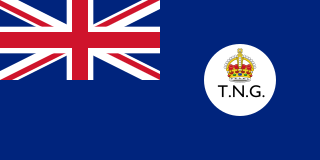 W
WThe Territory of New Guinea was an Australian administered territory on the island of New Guinea from 1914 until 1975. In 1949, the Territory and the Territory of Papua were established in an administrative union by the name of the Territory of Papua and New Guinea. That administrative union was renamed as Papua New Guinea in 1971. Notwithstanding that it was part of an administrative union, the Territory of New Guinea at all times retained a distinct legal status and identity until the advent of the Independent State of Papua New Guinea.
 W
WThe Northern Solomons were the more northerly group of islands in the Solomon Islands archipelago over which Germany declared a protectorate in 1885. Initially the German Solomon Islands Protectorate included in the south-east Choiseul, Santa Isabel and the Shortlands with highly northern, vast, mainly water Ontong Java Atoll that in 1900 were conferred to the British Solomon Islands Protectorate. Greatest of the region, Bougainville, continued under German administration until World War I when it fell to Australia, and after the war, it formally passed to Australian jurisdiction under a League of Nations mandate.
 W
WThe Papua and New Guinea Development Bank commenced operations on 6 July 1967 from an office in Port Moresby. The Bank played a significant role in the economic development of the country immediately prior to and after it achieved independence on 16 September 1975.
 W
WSandline International was a private military company (PMC) based in London, established in the early 1990s. It was involved in conflicts in Papua New Guinea in 1997 and had a contract with the government under then-Prime Minister Julius Chan, causing the Sandline affair. In 1998 in Sierra Leone Sandline had a contract with ousted President Kabbah and in Liberia in 2003 was involved in a rebel attempt to evict the then-president Charles Taylor near the end of the civil war. Sandline ceased all operations on 16 April 2004.
 W
WMajor General Sir Peter Henry Scratchley was special commissioner for Great Britain in New Guinea 1884–1885 and defence adviser for Australia.
 W
WSeeadler Harbor, also known as Port Seeadler, is located on Manus Island, Admiralty Islands, Papua New Guinea and played an important role in World War II. In German, "Seeadler" means sea eagle, pointing to German colonial activity between 1884 and 1919 in that area. The bay was named in 1900 after the German cruiser SMS Seeadler.
 W
WLucian Tapiedi was a Papuan Anglican teacher who was one of the "New Guinea Martyrs." The Martyrs were eight Anglican clergy, teachers, and medical missionaries killed by the Japanese in 1942.
 W
WThe Territory of Papua comprised the southeastern quarter of the island of New Guinea from 1883 to 1975. In 1883, the Government of Queensland annexed this territory for the British Empire. The United Kingdom Government refused to ratify the annexation but in 1884 a Protectorate was proclaimed over the territory, then called "British New Guinea". There is a certain ambiguity about the exact date on which the entire territory was annexed by the British. The Papua Act 1905 recites that this happened "on or about" 4 September 1888. On 18 March 1902, the Territory was placed under the authority of the Commonwealth of Australia. Resolutions of acceptance were passed by the Commonwealth Parliament, who accepted the territory under the name of Papua.